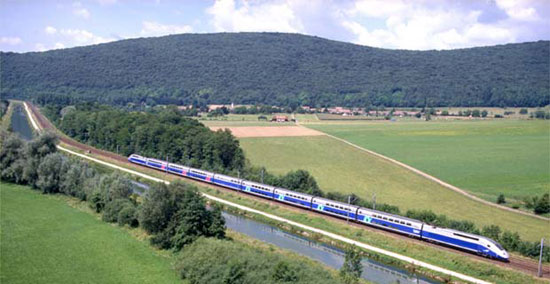
A high-speed railway system is finally coming to America. And with America I mean Argentina and not the USA.
The newly elected President, Christina Kirchner, has decided to build a 710 km (440 mile) long high-speed railway system in Argentina for a total cost of $1.35 billion.
The French company Alstom has signed the contract to build the first high-speed railway system in America. Philippe Mellier, President of Alstom Transport, says that "the Buenos Aires-Rosario-Cordoba line constitutes the largest very high speed rail project since the KTX project in Korea. It represents an essential component in the economic development of Argentina."
The high-speed railway system is planned to link Argentina's two major cities, Buenos Aires and Cordoba. The journey is estimated to take 3 hours instead of the 14 hours it normally takes today. Eight double deck trains, capable of speeds of up to 320kph, with a capacity of 500 passengers each, will be used.
Image credit: http://www.railway-technology.com

Recommended Comments
Join the conversation
You can post now and register later. If you have an account, sign in now to post with your account.